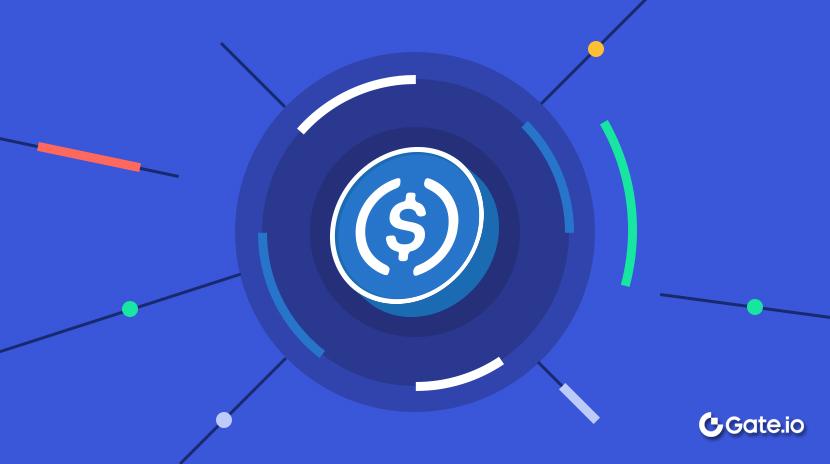Apa itu USDtb? Semua yang Perlu Anda Ketahui Tentang USDtb
Stablecoin telah menjadi komponen penting dalam ekosistem aset digital, menawarkan stabilitas mata uang fiat dengan efisiensi teknologi blockchain. Seiring dengan meningkatnya permintaan akan dolar digital yang lebih cepat, transparan, dan dapat diandalkan, stablecoin menjadi krusial dalam memungkinkan pembayaran tanpa batas, partisipasi keuangan terdesentralisasi (DeFi), dan penyelesaian aset on-chain. Keamanan, skalabilitas, dan dukungan tipe institusi telah muncul sebagai pembeda kunci dalam pasar yang berkembang pesat ini. Di antara peserta terbaru dan paling menjanjikan adalah USDtb, stablecoin USD yang sepenuhnya didukung, yang merupakan asli blockchain dan menggabungkan kecepatan, transparansi, dan ketahanan, menjadikannya pesaing signifikan dalam konteks stablecoin yang berkembang.
Pengantar ke Ethena Labs
Ethena Labs adalah protokol keuangan terdesentralisasi (DeFi) yang dibangun di Ethereum, terkenal karena mengembangkan USDe, sebuah dolar sintetis yang didukung oleh strategi delta-netral yang menggabungkan aset spot kripto dengan posisi derivatif pendek. Pendekatan ini memungkinkan stabilitas dolar on-chain tanpa memerlukan infrastruktur perbankan tradisional. Didirikan oleh Guy Young pada bulan Juli 2023, Ethena Labs muncul dari latar belakang yang luas di bidang keuangan tradisional, termasuk peran senior di Cerberus Capital Management.
Ethena meluncurkan USDe ke publik pada Februari 2024, dengan cepat mendapatkan daya tarik melalui Kampanye Shard-nya, yang mendorong pengguna awal dan integrasi. Pada 13 Maret 2024, USDe mencapai 1 miliar pasokan, dan token governance ENA-nya diluncurkan tak lama setelahnya, memperluas pengambilan keputusan terdesentralisasi protokol. Kampanye Sats menyusul, menargetkan adopsi yang lebih luas dengan BTC sebagai jaminan.
Selain USD, Ethena juga memperkenalkan “Internet Bond,” yang menggabungkan imbal hasil staking dan imbal hasil futures untuk menawarkan aset yang menghasilkan imbal hasil terdesentralisasi. Pada Desember 2024, Ethena lebih lanjut memperluas rangkaian produknya dengan peluncuran USDtb, stablecoin yang didukung penuh dengan nilai tetap 1:1 terhadap dolar AS yang didukung oleh dana kas BlackRock yang ditokenisasi (BUIDL).
Dengan penawaran ganda dari stablecoin sintetis (USDe) dan stablecoin yang sepenuhnya didukung (USDtb), Ethena Labs memposisikan diri sebagai inovator terkemuka dalam ekosistem stablecoin, menjembatani keuangan tradisional dan DeFi melalui teknik rekayasa yang kuat dan integrasi aset berkelas institusi.
USDtb mewakili evolusi strategis dalam peta jalan Ethena, melengkapi USDe dengan menawarkan alternatif yang sepenuhnya didukung bagi pengguna yang memprioritaskan stabilitas risiko rendah. Model dual ini mencerminkan visi lebih luas Ethena untuk melayani selera risiko yang beragam di pasar DeFi dan institusi.
Apa itu USDtb?
USDtb adalah stablecoin berbasis blockchain USD yang dikembangkan oleh Ethena Labs dan diluncurkan pada Desember 2024. Ini mengikuti model penuh dukungan, di mana setiap token USDtb mewakili satu dolar AS dan didukung oleh aset real-world, setara dengan dolar. Tidak seperti banyak token digital, USDtb dirancang untuk stabilitas, transparansi, dan skalabilitas, menawarkan pengguna kemampuan untuk mengirim, menerima, menyimpan, atau memperdagangkannya seperti halnya dolar digital lainnya—dengan manfaat tambahan penyelesaian blockchain yang lebih cepat, lebih murah, dan tanpa izin.
Sebagian besar cadangan USDtb, sekitar 90%, disimpan di BlackRock's USD Institutional Digital Liquidity Fund (BUIDL), sebuah dana pasar uang ter-tokenisasi yang dibangun dalam kerjasama dengan Securitize. BUIDL berinvestasi dalam uang tunai, surat berharga Departemen Keuangan AS, dan perjanjian pembelian kembali, memberikan jaminan kelas institusi dan kredibilitas peminjaman kepada USDtb melalui reputasi BlackRock. Sisa cadangan, sekitar 2%, disimpan dalam stablecoin berkualitas tinggi seperti USDC, memastikan likuiditas penebusan langsung selama akhir pekan atau di luar jam pasar.

Sumber: usdtb.money
USDtb dapat saling berkompatibilitas antar-rantai dan dirancang untuk berkembang melintasi blockchain utama, termasuk Ethereum, Arbitrum, Avalanche, dan Polygon. Interoperabilitas ini, dikombinasikan dengan dukungan yang kuat, menempatkan USDtb sebagai salah satu stablecoin yang paling tangguh dan dapat diskalakan di pasar. Untuk memastikan keamanan dan kepercayaan, kontrak pintarnya telah menjalani tiga audit privat—oleh Kelompok Audit Pashov, Quantstamp, dan Cyfrin—yang melaporkan tidak adanya risiko tingkat tinggi atau menengah. Kontes audit Code4rena tindak lanjut pada November 2024 lebih lanjut memvalidasi integritas kode-nya.
Tidak seperti stablecoin berbasis algoritma atau sebagian dijamin, USDtb beroperasi dengan transparansi yang lengkap dan dukungan keuangan tradisional. Ini menawarkan jembatan yang menggoda antara infrastruktur terdesentralisasi dan keuangan institusional, bertujuan untuk menyediakan simpanan nilai yang dapat diandalkan, sarana pembayaran yang efisien, dan aset on-chain yang kuat untuk aplikasi DeFi.
Ke depan, Ethena bertujuan untuk mengintegrasikan perjanjian peminjaman RWA ke dalam USDtb pada K3 2025, memperluas utilitas. Jangka panjang, visi USDtb termasuk memberdayakan jaringan pembayaran lintas rantai yang patuh yang menghubungkan ekosistem DeFi dengan infrastruktur keuangan global untuk transfer nilai yang lancar.
Bagaimana Cara Kerja USDtb? Desain Struktural dan Pencetakan
USDtb dibangun di atas kerangka struktural yang kuat dan independen yang sengaja dirancang untuk tidak terkait dengan kebangkrutan dan terisolasi operasional dari aktivitas bisnis lebih luas dari mitra yang berafiliasi. Token ini diterbitkan oleh Pallas (BVI) Ltd., sebuah perusahaan bisnis yang terdaftar di Kepulauan Virgin Britania. Pallas beroperasi di bawah pengawasan Yayasan Pallas, sebuah yayasan terkecuali Kepulauan Cayman yang tidak memiliki pemegang saham, manfaat, atau anggota. Sebaliknya, yayasan tersebut ada semata-mata untuk mendukung USDtb—ini termasuk mengawasi penerbitan, penebusan, infrastruktur, dan pertumbuhan jangka panjangnya. Yayasan Pallas diatur oleh seorang direktur tunggal, Marc Piano dari Horizons Global, memastikan bahwa operasinya tetap netral dan transparan.
Aset yang mendukung USDtb dikelola secara terpisah oleh Pallas Fund (BVI) Ltd., yang juga terdaftar di BVI dan diakui sebagai dana investasi swasta oleh BVI Financial Services Commission. Pallas Fund memegang produk dana U.S. Treasury yang telah di-tokenisasi di rekening kustodian berperingkat institusi. Itu tidak beroperasi dengan kepentingan komersial apa pun di Ethena Labs. Sebaliknya, itu diatur oleh direktur independen dari Horizons Global dan Harneys Fiduciary Services, tanpa adanya tumpang tindih antara Pallas Foundation, Pallas Fund, dan manajer investasi yang ditunjuk.
Manajemen aset untuk Dana Pallas ditangani oleh Athene Management Limited, afiliasi yang diatur dari Ethena Labs. Athene dikontrak semata-mata berdasarkan perjanjian layanan investasi dan tidak memiliki ekuitas atau hak suara di Dana Pallas, memastikan pemisahan peran yang ketat. Untuk memenuhi kebutuhan likuiditas, terutama untuk pencetakan dan penarikan 24/7, sebagian dari cadangan USDtb mungkin dipegang dalam stablecoin oleh Pallas. Ini disimpan dalam solusi kustodian institusional untuk memungkinkan penarikan langsung tanpa mengandalkan jam kerja perbankan tradisional.
Hanya individu dan entitas dari yurisdiksi yang diizinkan dan yang lolos melalui prosedur Kenali-Pelanggan-Anda (KYC) dan Pencegahan Pencucian Uang (AML) yang dapat mendaftar untuk menjadi Pengguna Mint, memperoleh hak untuk membuat dan menukarkan USDtb secara langsung dengan Pallas. Peserta yang memenuhi syarat tunduk pada Ketentuan USDtb dan Perjanjian Pengguna Mint USDtb, yang menguraikan panduan yang jelas untuk penggunaan token, prosedur penebusan, dan tanggung jawab pengguna.
Untuk menjaga transparansi, USDtb menyediakan dokumentasi jelas tentang struktur hukum dan operasionalnya, laporan NAV bulanan untuk Dana Pallas, dan visibilitas on-chain ke dompet dan aliran tokennya. Yang penting, pemegang USDtb tidak memiliki hak tata kelola, pendapatan, atau partisipasi dalam entitas penerbitan atau pengelolaannya. Desain ini memastikan bahwa USDtb adalah stablecoin yang transparan dan didukung penuh, yang didukung oleh model tata kelola bertingkat, pengelolaan aset yang diatur, dan struktur kustodian yang aman, menawarkan tingkat kepercayaan yang tinggi bagi pengguna yang terlibat dalam transaksi dolar digital.

Sumber: usdtb.money
Mencetak
Proses pencetakan USDtb didesain dengan ketat menggunakan perlindungan teknis dan institusional, memastikan mekanisme penerbitan yang aman, transparan, dan dapat diskalakan. Pada intinya, USDtb menggunakan sistem pencetakan dan penebusan berbasis kontrak pintar yang diterapkan pada Ethereum, yang mengatur bagaimana token USDtb diciptakan atau dihancurkan. Kontrak pintar ini berfungsi berdasarkan pesanan yang ditandatangani secara kriptografis, yang diotorisasi dan diproses oleh satu entitas admin tunggal—Pallas. Arsitektur ini mencakup fitur-fitur seperti batasan pencetakan/penebusan per blok, penandatangan deleGate.com, dan kontrol kustodian, yang semuanya melindungi sistem dari penyalahgunaan dan menjaga integritas operasional.
Untuk memulai transaksi mint atau redeem, peserta yang disetujui—dikenal sebagai Benefactor—harus melewati pemeriksaan KYC/AML terlebih dahulu dan mendaftar di bawah Perjanjian Pengguna Mint USDtb. Pesanan dibuat di luar rantai menggunakan standar tanda tangan EIP-712 atau EIP-1271 dan diarahkan melalui server RFQ (Request for Quote) yang dioperasikan oleh Pallas. Server RFQ melakukan validasi ketat dan penyaringan last-look untuk menghilangkan instruksi jahat sebelum menyetujui dan menandatangani transaksi untuk penyelesaian di rantai.
Setelah diverifikasi, kontrak pintar menerapkan batas mint/redeem per aset dan batas global per blok, memastikan bahwa penerbitan USDtb tetap terkendali dan tahan terhadap manipulasi dalam skala besar. Untuk fleksibilitas yang lebih besar, USDtb memungkinkan delegasi tandatangan Gate.com, di mana alamat kontrak yang masuk daftar putih dapat memberikan wewenang kepada akun eksternal untuk melakukan tindakan penandatanganan.
USDtb yang dicetak hanya dapat dikirim ke alamat kustodian yang telah disetujui sebelumnya, yang saat ini mencakup Copper, Fireblocks, Zodia, Komainu, dan Coinbase Web3 Wallet (lihat tabel dukungan kustodian untuk ketersediaan program promosi yang spesifik). Para kustodian ini menyediakan penyimpanan berkelas institusi, memungkinkan pengguna yang mencetak untuk menerima USDtb dalam lingkungan yang aman dan teratur.

Sumber: docs.usdtb.money
Kontrak pintar juga mendukung Penerima Manfaat, memungkinkan Pemberi Manfaat terdaftar untuk menetapkan alamat alternatif untuk menerima token yang dicetak. Semua alamat dompet yang relevan dan pengenal kontrak—seperti kontrak pencetakan/penebusan dan alamat token USDtb di Ethereum, Base, Arbitrum, dan Solana—tersedia secara publik untuk memastikan transparansi penuh.
Pengguna yang disetujui untuk mencetak menikmati akses 24/7 ke USDtb, dengan penundaan minimal, bahkan selama liburan atau akhir pekan. Namun, jika cadangan stablecoin tidak mencukupi untuk penarikan langsung, Dana Pallas dapat menebus token BUIDL untuk menutupi penarikan, atau alternatifnya, pengguna dapat memilih untuk menerima BUIDL secara langsung jika memenuhi syarat.
Desain ini memastikan penerbitan USDtb yang efisien dan aman, sambil menjaga fleksibilitas dan kepercayaan yang diperlukan baik oleh pengguna ritel maupun institusi. Digabungkan dengan laporan NAV bulanan dan dompet on-chain transparan, sistem pencetakan USDtb mencerminkan standar integritas operasional yang tinggi dalam ekosistem stablecoin.
Fitur Utama USDtb
Keamanan Institusi dan Keahlian Terbukti
USDtb menawarkan stabilitas tingkat institusi dengan mendukung lebih dari 80% cadangan dengan dana BUIDL BlackRock, kendaraan pasar uang yang ter-tokenisasi yang mewakili aset Departemen Keuangan AS. Dukungan ini memastikan likuiditas yang dalam dan kepercayaan, diperkuat oleh pengalaman manajemen aset BlackRock yang luas. Struktur hukum yang terpisah dari kebangkrutan stablecoin lebih meningkatkan keamanan, memastikan bahwa aset dipisahkan dari kegiatan bisnis lainnya. Kontrak pintar USDtb telah menjalani tiga audit komprehensif oleh Pashov Audit Group, Quantstamp, dan Cyfrin, yang semuanya kembali tanpa temuan risiko tinggi atau sedang. Selain itu, Ethena Labs, pencipta USDtb, membawa kredibilitas operasional dari skala USDe hingga lebih dari $6 miliar dalam kapitalisasi pasar. Securitize, pemimpin dalam tokenisasi aset dunia nyata, menambahkan kekuatan lebih lanjut dengan memungkinkan integrasi on-chain yang dapat diandalkan dari aset institusi.
Aksesibilitas Antar-Ekosistem
USDtb dirancang untuk melayani baik lembaga maupun individu. Bagi entitas keuangan tradisional, ini menawarkan titik masuk dengan friksi rendah ke ruang aset digital tanpa paparan terhadap mata uang kripto yang volatile. Sementara itu, pengguna ritel dapat dengan mudah menggunakan USDtb di seluruh protokol DeFi, bursa terpusat, platform kolateral, dan tempat pialang utama. Arsitekturnya memastikan kompatibilitas dengan blockchain utama, menjadikannya pilihan ideal bagi pengguna yang mencari stablecoin yang dapat diandalkan, dapat dipindahkan, dan interoperabel. Struktur USDtb memperluas akses di seluruh ekosistem keuangan, memungkinkan integrasi yang lebih luas antara institusi Web2 dan pasar Web3.
Skalabilitas dan Kesadaran Regulasi
USDtb dibangun khusus untuk skalabilitas dan kesiapan regulasi, dua perbedaan kunci dalam lingkungan stablecoin saat ini. Dengan memanfaatkan kerangka KYC/AML yang kokoh, USDtb sejalan dengan tuntutan kepatuhan institusional yang meningkat. Jembatan token dan kehadiran multi-chain memungkinkan ekspansi tanpa hambatan di berbagai ekosistem seperti Ethereum, Base, Arbitrum, dan Solana. Seiring dengan peningkatan kejelasan regulasi secara global, struktur transparan USDtb dan pemisahan peran yang jelas di antara Pallas, Pallas Fund, dan penjaga posisikan itu sebagai stablecoin yang patuh dan progresif. Hal ini memastikan relevansinya dalam aplikasi DeFi ritel dan infrastruktur keuangan terregulasi, menjadikannya alat yang serbaguna untuk ekonomi digital yang terus berkembang.
Tokenomika USDtb
USDtb mempertahankan struktur cadangan yang sepenuhnya transparan dan dijamin berlebihan, dengan rasio jaminan sebesar 100,03% per 23 Maret 2025. Hal ini memastikan bahwa setiap token USDtb didukung 1:1 (atau sedikit lebih) oleh aset berkualitas tinggi dan dapat diverifikasi yang dipegang melalui kustodian institusi. Pasokan total saat ini berada di 1,18 miliar USDtb, dengan jumlah yang sama yaitu 1,18 miliar dalam aset penjaminan, semuanya dapat diaudit dan dilihat secara langsung di rantai blok secara real-time.
Komposisi cadangan USDtb dipimpin oleh dana BUIDL BlackRock, yang menyumbang sekitar 70% dari total cadangan, senilai sekitar $832,74 juta. Sisa 30%, atau sekitar $349,94 juta, disimpan dalam USDC, menawarkan likuiditas dan ketersediaan penarikan langsung bahkan selama akhir pekan atau libur bank. Tidak ada paparan saat ini terhadap USDT atau aset lain, menyoroti komitmen USDtb dalam menggunakan jaminan yang transparan dan diatur.
Dari sudut pandang kustodian, USDtb didistribusikan di seluruh platform berkelas institusi utama. Menurut pemecahan kustodian terbaru, 44% aset dipegang oleh Komainu, 27% oleh Copper, dan 30% dikelola dalam sistem kontrak Mint & Redeem. Coinbase dan Zodia saat ini tidak memiliki cadangan dalam snapshot ini.
Kemampuan penebusan untuk USDtb adalah instan, berkat keseimbangan antara kas treasuri ter-tokenisasi (BUIDL) dan stablecoin likuid (USDC), memungkinkan pengguna mint untuk menebus jumlah besar dengan cepat dan tanpa gesekan.

Sumber: usdtb.money
Ekosistem USDtb
USDtb didukung oleh ekosistem yang kuat dari investor institusional, kustodian, penyedia likuiditas, mitra infrastruktur, dan auditor, mencerminkan posisinya sebagai stablecoin terkemuka bagi pengguna ritel dan institusional. Jaringan yang luas ini meningkatkan keandalan, aksesibilitas, dan kepercayaan USDtb di sektor keuangan terdesentralisasi maupun tradisional.
Di sisi investasi, USDtb didukung oleh perusahaan keuangan global terkemuka. Fidelity, salah satu manajer aset terbesar di dunia dengan lebih dari $5 triliun di bawah pengelolaannya, dan Franklin Templeton, sebuah perusahaan investasi warisan dengan jejak global, membawa kredibilitas keuangan tradisional ke proyek ini. Perusahaan kripto asli seperti Dragonfly dan Deribit, serta bursa besar, juga telah berinvestasi dalam pertumbuhan USDtb dan infrastrukturnya.
Keamanan dan perlindungan pengguna USDtb diperkuat melalui penjaga teratas. Ini termasuk Copper, yang dikenal karena solusi penyelesaian di luar bursa; Coinbase Custody, platform aman untuk penyimpanan aset institusi; Zodia dan Komainu, kedua-duanya penjaga aset digital teratur yang dibangun untuk perlindungan tingkat institusi; dan Fireblocks, platform berkelas perusahaan untuk mengelola aset digital secara aman.
Likuiditas dalam berbagai pasar dijamin oleh penyedia likuiditas terkemuka seperti Wintermute, Cumberland, GSR, Amber Group, dan SCB Limited, yang berkontribusi pada perdagangan yang lancar dan pengurangan slippage dalam transaksi dengan volume tinggi.
Dari sisi infrastruktur, LayerZero mendukung interoperabilitas omnichain, memungkinkan USDtb berfungsi di sejumlah blockchain. Kontrak pintar protokol telah mengalami audit komprehensif oleh Quantstamp, Cyfrin, Pashov Audit Group, dan Code4rena, memastikan jaminan keamanan yang kuat bagi pengguna dan pengembang.
USDtb juga terintegrasi dengan StarGate.com Finance, sebuah jembatan aset asli yang memfasilitasi likuiditas lintas rantai dan interaksi DeFi yang dapat disusun, yang lebih meningkatkan perannya sebagai stablecoin dasar dalam ekonomi Web3 yang lebih luas.

Sumber: usdtb.money
Kasus Penggunaan USDtb
USDtb menawarkan seperangkat kasus penggunaan yang serbaguna yang meluas di seluruh keuangan terdesentralisasi (DeFi), integrasi keuangan tradisional, dan manajemen risiko internal dalam ekosistem Ethena. Dukungan penuh oleh aset U.S. Treasury yang ter-tokenisasi dan integrasi dengan penyedia keamanan institusional dan likuiditas membuatnya menjadi alat terpercaya untuk berbagai aktivitas keuangan.
- Diversifikasi Risiko dan Stabilitas Internal: USDtb bertindak sebagai mekanisme lindung nilai dalam ekosistem Ethena, terutama selama kondisi pasar yang tidak menguntungkan. Ketika strategi yield delta netral USDe menjadi tidak menguntungkan, Ethena dapat menutup posisi derivatifnya dan mengalokasikan modal ke USDtb untuk menjaga kewaranan protokol dan kepercayaan pengguna. Struktur diversifikasi risiko ini memungkinkan ekosistem untuk terus beroperasi dengan lancar, menawarkan opsi aset yang stabil kepada pengguna tanpa meninggalkan platform.
- Penyelesaian dan Pembayaran On-Chain: Sebagai dolar asli blockchain, USDtb ideal untuk penyelesaian instan yang murah dalam protokol DeFi, pertukaran terpusat, dan jaringan pembayaran. Stabilitas dan cadangan yang transparan menjadikannya cocok untuk digunakan dalam pembayaran peer-to-peer, pengiriman uang, dan transaksi pedagang di mana volatilitas tidak dapat ditoleransi. Kompatibilitas USDtb di berbagai rantai dan dompet memperluas kegunaannya sebagai medium pertukaran baik di lingkungan ritel maupun institusi.
- Jembatan ke Keuangan Tradisional (TradFi): Dengan mendukung stablecoin dengan dana BUIDL BlackRock, USDtb memberikan representasi on-chain yang meyakinkan dari eksposur keuangan tradisional. Ini menawarkan investor institusional jalur masuk ke crypto dengan karakteristik risiko yang akrab, memfasilitasi integrasi antara TradFi dan pasar aset digital. Saat kejelasan regulasi membaik, USDtb berada pada posisi untuk menjadi aset penyelesaian dan agunan yang disukai untuk layanan keuangan yang patuh.
Apakah USDtb merupakan Investasi yang Baik?
USDtb menawarkan ketangguhan yang kuat melalui dukungan berkelas institusionalnya, dengan lebih dari 80% cadangan yang dipegang di dana BUIDL BlackRock, memberikan paparan pada obligasi Amerika Serikat yang di-tokenisasi. Meskipun USDtb dirancang untuk menjaga nilai stabil sebesar $1, dan oleh karena itu biasanya tidak dianggap sebagai investasi spekulatif, itu dapat berfungsi sebagai simpanan nilai yang dapat diandalkan, terutama bagi individu di negara-negara yang menghadapi hiperinflasi. Namun, akses pencetakan dan penebusan USDtb terbatas pada pengguna yang disetujui KYC di yurisdiksi tertentu, dan pemegangnya tidak memiliki klaim atas imbalan atau hak tata kelola, yang dapat membatasi daya tarik atau fungsionalitas yang lebih luas.
Selain hak penebusan terbatas dan pembatasan yurisdiksi, pemegang USDtb menghadapi risiko potensial seperti likuiditas aset dana BUIDL dan kerentanan jembatan lintas-rantai. Ini dapat dikurangi melalui audit reguler, protokol keamanan yang ditingkatkan, dan strategi manajemen cadangan yang terdiversifikasi.
Berita tentang USDtb
Seperti yang dilaporkan pada 25 Februari 2025, di situs web resmi USDtb, Zodia Custody telah meluncurkan program imbalan untuk klien institusional yang memegang USDe dan USDtb. Didukung oleh lembaga keuangan utama seperti Standard Chartered dan NAB, Zodia akan mendistribusikan imbalan on-chain kepada klien yang mempertahankan saldo rata-rata bulanan sebesar $5 juta per dompet dan aset. Dalam kemitraan dengan Ethena Labs, inisiatif ini bertujuan untuk meningkatkan efisiensi modal dan mempercepat adopsi stablecoin oleh lembaga. Pendaftaran dibuka segera dan akan terus berlanjut secara bergulir di platform penitipan yang didukung.
Artikel Terkait
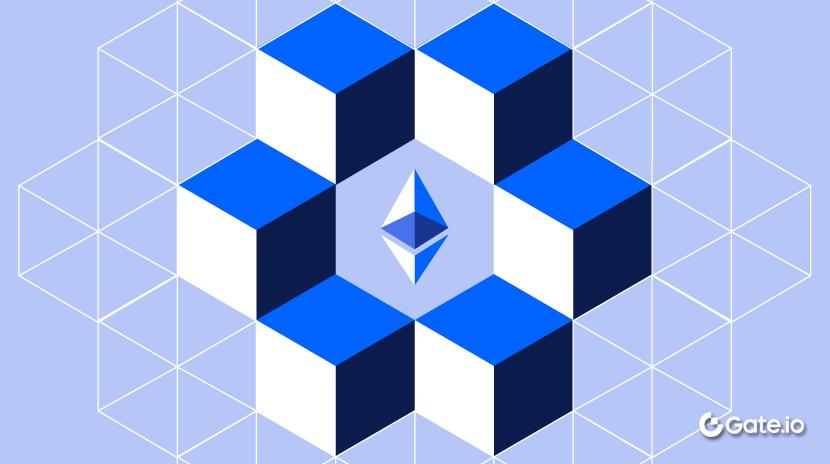
Bagaimana Mempertaruhkan ETH?

Apa itu Tronscan dan Bagaimana Anda Dapat Menggunakannya pada Tahun 2025?
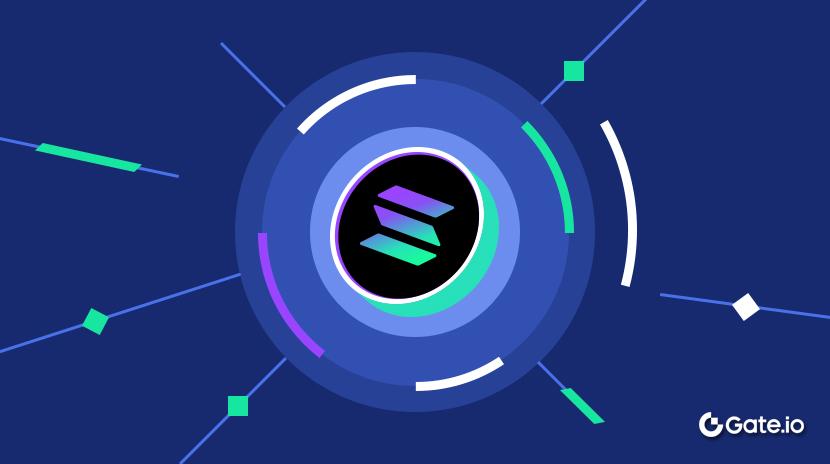
Apa itu Solana?
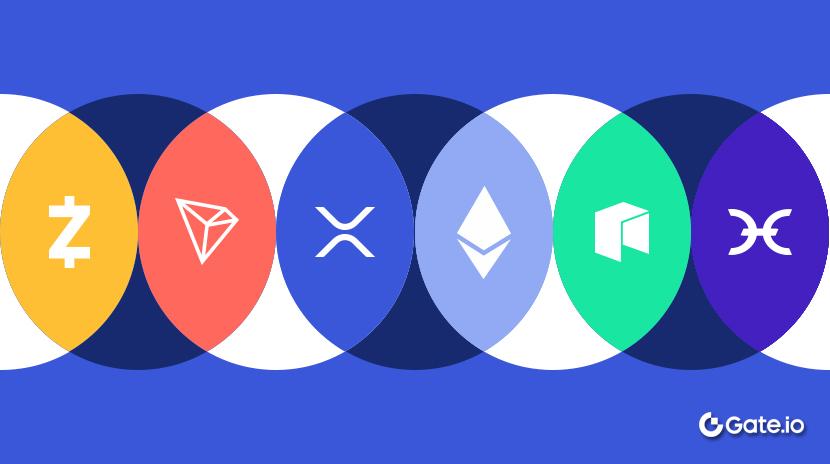
Apa itu Altcoin?
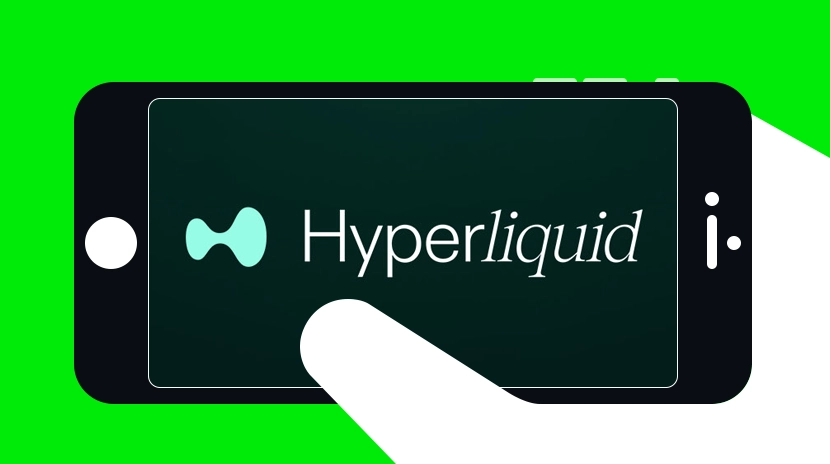
Apa itu Hyperliquid (HYPE)?
